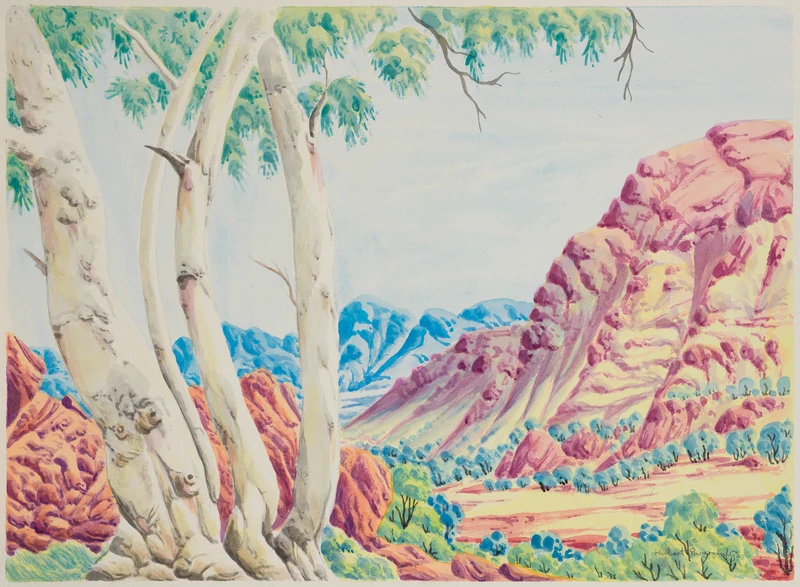Weer Loo - The Cry Of The Curlew
29 May-13 Jul 2024
PV 29 May 2024, 6-8pm


JGM Gallery presents Weer Loo - The Cry Of The Curlew, an exhibition of watercolour and acrylic paintings by Hubert Tjapaltjarri Pareroultja, a proud Arrernte man living and working on Country in his traditional homelands of Ntaria, South Central Australia.
Pareroultja is the inheritor of one of Australia's most significant - and certainly longest lasting - artistic movements. His work represents a continuation of what is known as the Hermannsburg School, a style pioneered by Rex Battarbee and Pareroultja's uncle, the great Albert Namatjira. Although, of course, each exponent of this style has their own visual lexicon, what unites almost all their work is a hybridity of the one point perspective of European landscape painting, and the earthbound philosophy of the Arrernte. The resulting aesthetic is luminous and almost hallucinatory in its effect. Shadows are often painted as variations in colour rather than tone, adding to the descriptiveness of the pictures, revealing as it does aspects of the land that would otherwise remain obscure. There is consequently a heightened sense of one's surroundings, as though Pareroultja's brush elucidates more from the land than the naked eye.
Pareroultja paints directly, without preliminary drawings or sketches. Consequently, forms are not always sharply defined, imbuing the paintings with a lucidity and dynamism that mimics the transient nature of the landscape itself. Mountain tops and horizon lines are angled off their axes, and the curve of branches are often accentuated, representational decisions that animate the land and underscore its vitality. A recurring motif is a group of trees in the foreground which, almost anthropomorphically, represent the viewer, or perhaps the artist himself. In a purely formal sense, they contextualise the scale of the surrounding landscape.
"Weer Loo" is what the artist's grandfather called the curlew, a large, ground-dwelling bird endemic to Australia. A field report from Brookton, Western Australia, once noted that their call was heard in response to the cry of possums shot by hunters (Hill, H.E. (1903), Some Notes from Brookton, W.A.). Pareroultja himself states that "I hear the sound of the curlew at night on my Country, it's part of the Dreamtime story of my outstation, the birds make an unusual sound. They call each other together and celebrate and dance like a sacred ritual and it reminds me of the old Arrernte People who would dance ceremony, which may take the form of a corroboree. So, my London show is a celebration of my work."
This exhibition crystallises the cultural exchange that took place in the early 20th century between non-Aborigines and Australia's First Nations People - "... both ways..." as Pareroultja states. Pain and injustice characterised much of this time in Australia's history, as indeed it still does in many respects, but this period also bore witness to great men and women of Aboriginal and European descent, working together and exchanging ideas. If there is something to be triumphant about from this time, and something that perhaps hints at a future of reconciliation, respect and progress, it is that, and the spirit of the Arrernte, and the Art that allowed them to be triumphant.